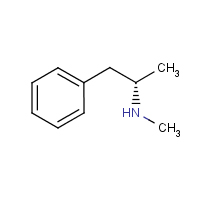What is the difference between pseudoephedrine, ephedrine and methamphetamine?
HOW CAN SMALL CHANGES IN A MOLECULE RESULT IN MAJOR PHYSIOLOGICAL AND PSYCHOLOGICAL CHANGES
NOTE THE SIMILAR STRUCTURES BETWEEN THE PSEUDOEPHEDRINE, EPHEDRINE AND METHAMPHETAMINE MOLECULES
The Pseudoephedrine Molecule -- C10H15NO
Pseudoephedrine is a sympathomimetic amine. Its principal mechanism of action relies on its indirect action on the adrenergic receptor system. The vasoconstriction that pseudoephedrine produces is believed to be principally an alpha-adrenergic receptor response. It is used as a nasal/sinus decongestant and stimulant, or as a wakefulness-promoting agent.
Pseudoephedrine is a diastereomer of ephedrine (see below) and is readily reduced into methamphetamine or oxidized into methcathinone.
NOTE: Diastereomers (sometimes called diastereoisomers) are stereoisomers that are not enantiomers.[1] Diastereomerism occurs when two or more stereoisomers of a compound have different configurations at one or more (but not all) of the equivalent (related) stereocenters and are not mirror images of each other read more
While it may have weak or no direct agonist activity at alpha- and ß-adrenergic receptors, the principal mechanism is to cause the release of endogenous norepinephrine (noradrenaline) from storage vesicles in presynaptic neurons. The displaced noradrenaline is released into the neuronal synapse where it is free to activate the postsynaptic adrenergic receptors. These adrenergic receptors are located on the muscles lining the walls of blood vessels. When these receptors are activated by noradrenaline, the muscles contract, causing the blood vessels to constrict (vasoconstriction). The constricted blood vessels now allow less fluid to leave the blood vessels and enter the nose, throat and sinus linings, which results in decreased inflammation of nasal membranes as well as decreased mucus production. Thus, by constriction of blood vessels, mainly those located in the nasal passages, pseudoephedrine causes a decrease in the symptoms of nasal congestion.(source)
|
PSEUDOEPHEDRINE MOLECULE 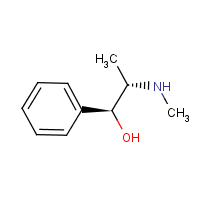 |
The Ephedrine Molecule -- C10H15NO
Ephedrine is a sympathomimetic amine commonly used as a stimulant, appetite suppressant, concentration aid, decongestant, and to treat hypotension associated with anaesthesia. Chemically, it is an alkaloid derived from various plants in the genus Ephedra (family Ephedraceae).
Ephedrine is similar in structure to the (semi-synthetic) derivatives amphetamine and methamphetamine. Chemically, it is an alkaloid derived from various plants in the genus Ephedra (family Ephedraceae). It works mainly by increasing the activity of noradrenaline on adrenergic receptors.
..."Ephedrine's stimulant actions result from direct and indirect activation of a- and ß-adrenoceptors. The major mechanism of its indirect action is considered to be release of norepinephrine from peripheral sympathetic neurons and, possibly, inhibition of neuronal norepinephrine reuptake, rather than a centrally mediated action..." source
In traditional Chinese medicines, the herb má huáng contains ephedrine and pseudoephedrine as its principal active constituents. The same is true of other herbal products containing extracts from Ephedra species. In traditional Chinese medicine, ephedrine has been used in the treatment of asthma and bronchitis for centuries. Both ephedrine and pseudoephedrine act as a bronchodilator, but pseudoephedrine has considerably less effect. Both also increase blood pressure, with again pseudoephedrine being considerably less effective.
|
EPHEDRINE MOLECULE
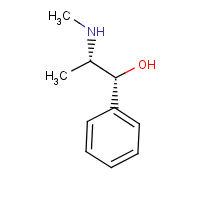 |
The Methamphetamine Molecule -- C10H15N
Methamphetamine is a psychostimulant of the phenethylamine and amphetamine class of psychoactive drugs. Methamphetamine has high potential for abuse and addiction, activating the psychological reward system by triggering a cascading release of dopamine in the brain. Methamphetamine is highly addictive. While the withdrawal itself may not be dangerous, withdrawal symptoms are common with heavy use and relapse is common. Methamphetamine is a potent neurotoxin, shown to cause dopaminergic degeneration. High doses of methamphetamine produce losses in several markers of brain dopamine and serotonin neurons.
Unlike pseudophedrine and ephedrine, methamphetamine is highly fat soluble and readily crosses the blood-brain barrier -- (see molecules by charge below) |
..." In the brain methamphetamine increases the release and blocks the reuptake of the brain chemical (or neurotransmitter) dopamine, leading to high levels of the chemical in the brain—a common mechanism of action for most drugs of abuse. Dopamine is involved in reward, motivation, the experience of pleasure, and motor function. Methamphetamine’s ability to release dopamine rapidly in reward regions of the brain produces the intense euphoria, or “rush,” that many users feel after snorting, smoking, or injecting the drug...." read more from source.
..."We do not completely understand how methamphetamine causes neurotransmitter release, but it appears to involve redistribution of neurotransmitters from synaptic vesicles (via the vesicular monoamine transporter VMAT2) to the neuronal cytoplasm and the reverse transport of neurotransmitters through the plasma membrane transporter into the extracellular space..." source
High does of methamphetamine leads to the production of toxic reactive species, such as reactive oxygen and/or nitrogen species (ROS and RNS, respectively). and consequent permanent dopaminergic deficits see source
|
METHAMPHETAMINE MOLECULE
|
--MOLECULES SHOWN BY CHARGE ---
PSEUDOEPHEDRINE MOLECULE |
EPHEDRINE MOLECULE |
METHAMPHETAMINE MOLECULE |
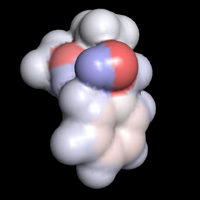 |
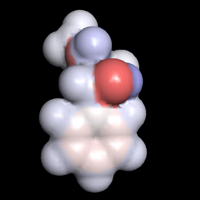 |
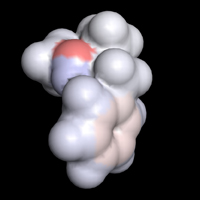 |
C10H15NO |
C10H15NO |
C10H15N |
SEE ALSO: HOW DO DRUGS WORK?
REFERENCES AND READINGS
Methamphetamine Mechanism of Action -- Mind over Matter a Teacher's Guide
Mechanisms of Methamphetamine-induced Dopaminergic Neurotoxicity
Methamphetamine Addiction Mechanism Discovered
Pharmacologic mechanisms of crystal meth
All text is available under the terms of the GNU Free Documentation License (see Copyrights for details). Disclaimers.
Explain it with Molecules
- Why is water such a good solvent?
- Why does ice float?
- Why do solids, liquids and gases behave differently?
- What is the geometry of methane?
- What's the difference between alpha and beta glucose?
- How does caffeine work in the brain?
- How does soap work?
- What is the difference between sucrose and fructose?
- Why is carbon monoxide so dangerous?
- Why is graphite so soft if it is made of only carbon?
- What is the difference between Carbyne and Graphite?
- Why is the fullerene and similar structures the cornerstone of nanotechnology?
- How big is a nanotube?
- Why does table salt have a cubic crystal shape?
- What is the structure of the benzene molecule?
- Why do carcinogens cause cancer?
- What causes Sickle Cell Anemia?
- What is the difference between sodium nitrite and nitrate?
- How do drugs work?
World of Molecules
- The Periodic Table of Elements
- What is a Molecule?-- When is a Molecule also a Compound?
- 3D Structures using Jsmol/Jmol
- Explain it with Molecules
- Healthy Molecules from Exercise
- Acid and Base Molecules
